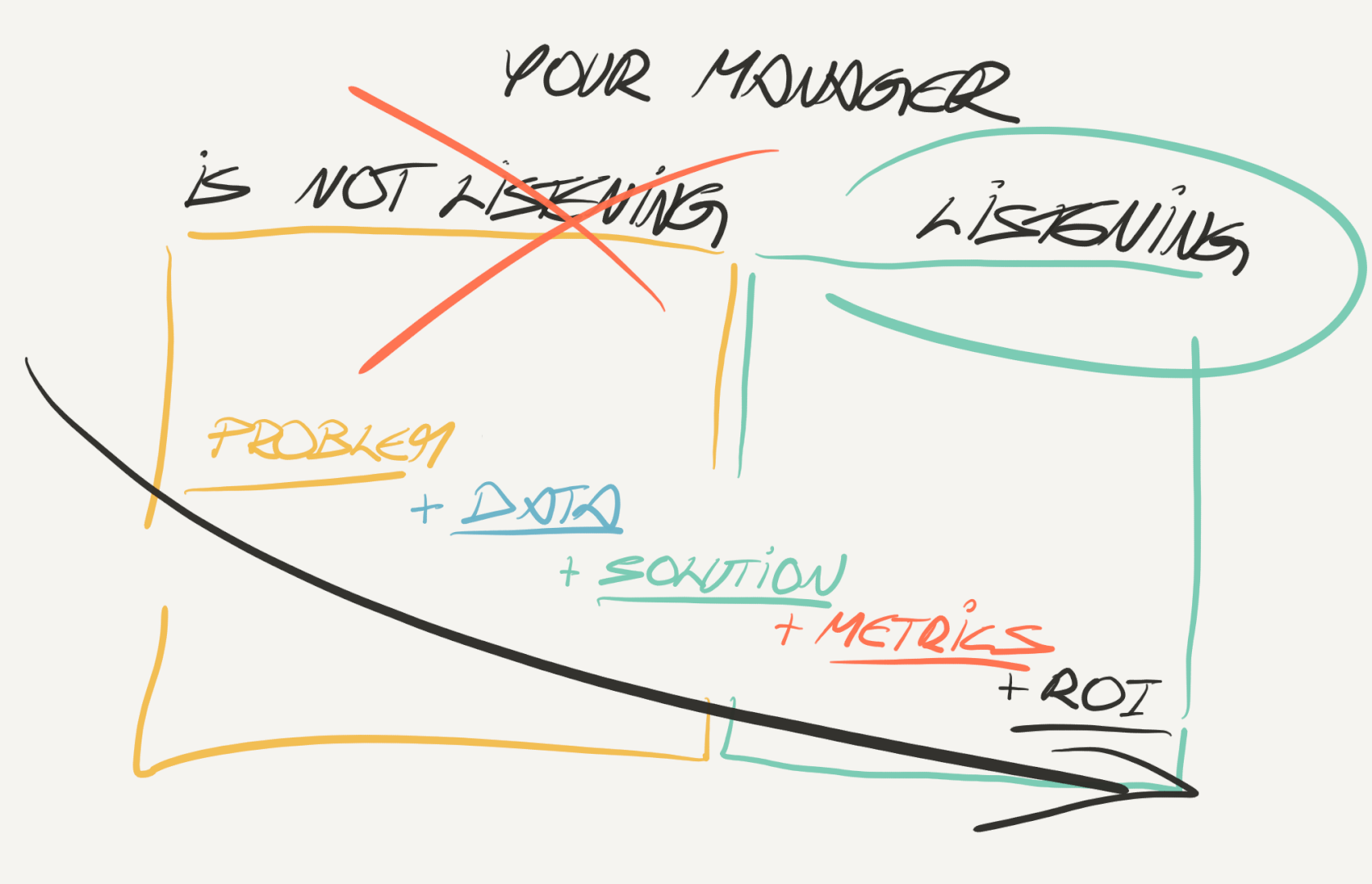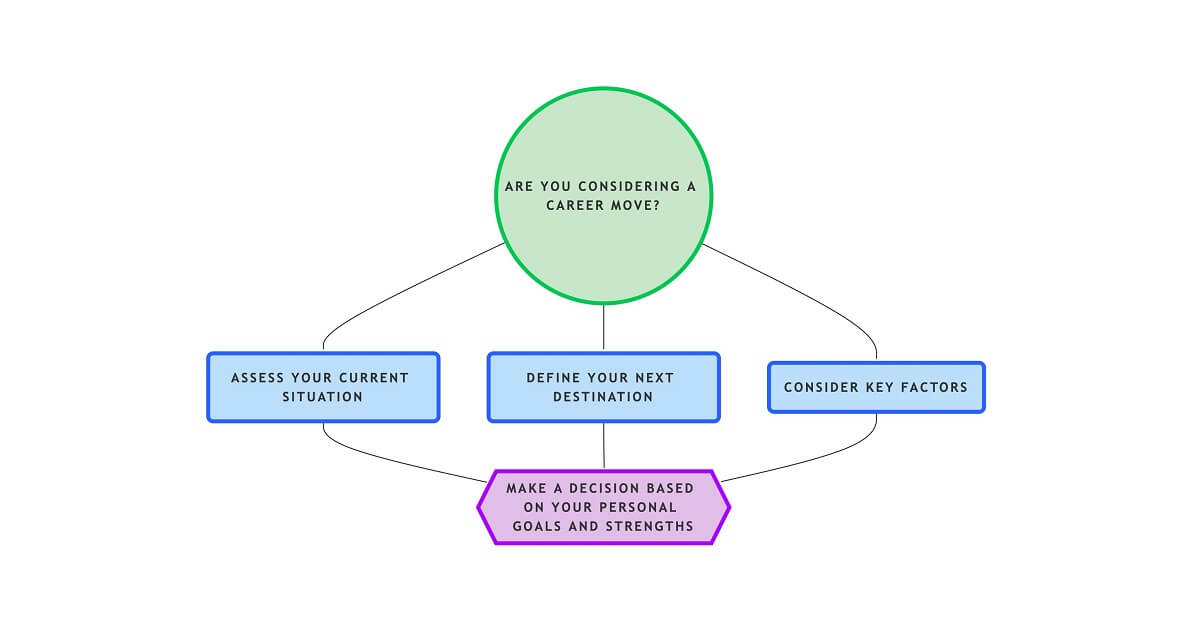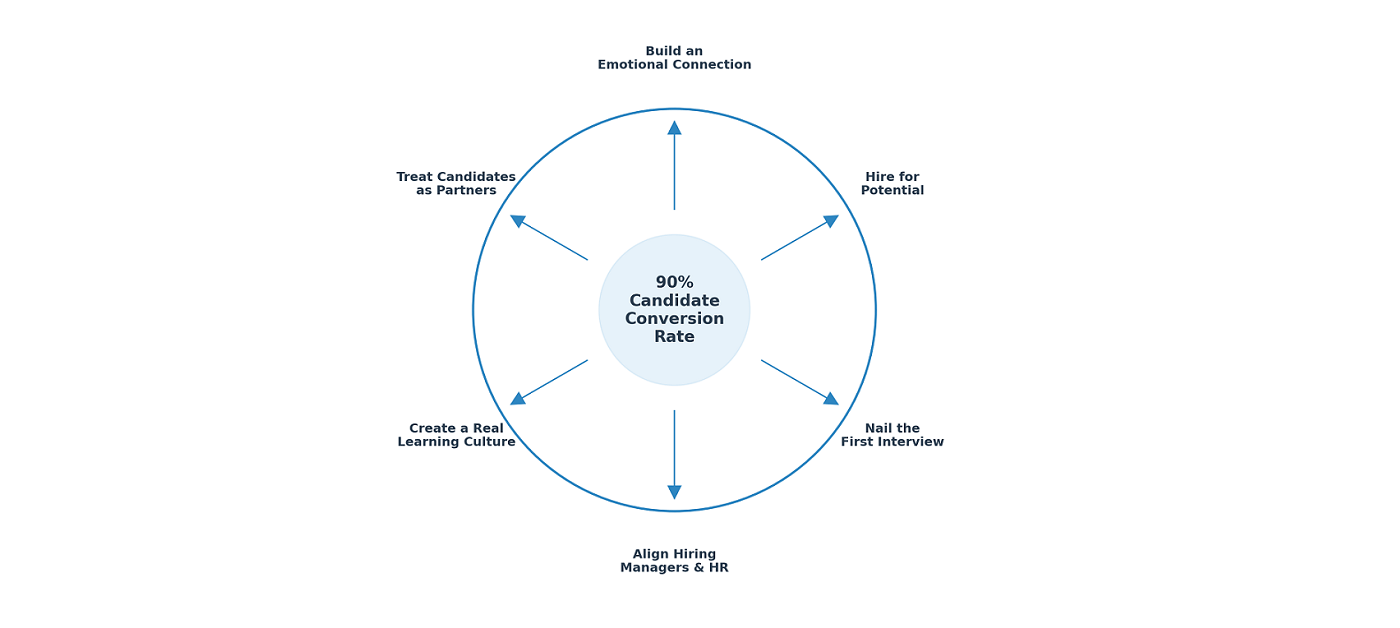Don’t just bring up problems. Explain to your boss what they get in return.

Still thinking about why you haven’t been promoted for 6 years?
What are you doing wrong?
What can you do to make your manager listen?
From zero to hero: The six levels of influence
How you communicate your ideas has the power to shape your manager’s response directly, so it’s crucial to identify which approaches bring success and which don’t.
I’m sharing practical tips on influencing your manager with the most important factors learned from my experience.
Funny enough, I used to be at Level Zero for quite some time.

Level 1: Problem
Half of our releases fail. I just want to let you know the customers are not happy.
While it can be beneficial to voice potential risks or highlight critical situations, don’t make it a regular habit.
Constant complaints without constructive input will harm your reputation, and no one will listen.
TIP: If people are coming to you with minor problems, you are entitled to use the “We’re not in the kindergarten” sentence.
When it comes to senior management, it’s important to establish a positive relationship. Don’t let yourself become known as an unhappy employee or a hater.
So let’s explore some better ways to communicate your point of view.
Level 2: Problem + Solution
Half of our releases fail, we need to invest into test automation.
You still express your concerns, but you accompany them with suggestions for improvement. This shows a willingness to contribute solutions rather than just highlighting problems.
By being more proactive, you start to catch your manager’s attention.
Level 3: Problem + Data + Solution
42% out of 14 releases have failed in the last 6 months. We need to invest into test automation.
If you present a well-defined situation supported by data and a proposal, your manager will suggest discussing it in a dedicated meeting.
Your concerns demand more focused discussion, and your manager is open to addressing them.
Backing up issues with concrete data adds weight to your arguments and will earn more of your manager’s attention. Now you’ve won an extra two minutes of their time.
Level 4: Problem + Data + Solution + Metrics
42% out of 14 releases have failed in the last 6 months. I created a proposal to fix this situation: Automaton of the critical pieces of the product will take 1 sprint of my team. We expect to lower the change failure rate to 10%.
Achieve pro status by presenting a full package: situation, data, proposal, and success metrics.
Clearly articulate that with this data, fixing XYZ would boost your efficiency, client conversion rate, or revenue by X%.
You now have your manager’s undivided attention.
Level 5: Problem + Data + Solution + ROI
42% out of 14 releases have failed in the last 6 months. I created a proposal to fix this situation: Automaton of the critical pieces of the product will take 1 sprint of my team. We expect to lower the change failure rate to 10%, thus lowering the churn by 15% ~ 200k/month. Moreover, we’ll speeed up the release process by 40%, saving 82k/month due to lower cloud usage and dev work.
Pro 2.0. You go a step further and assess the true value of your metrics by comparing the costs and returns. If the return significantly outweighs the costs, then it’s a sound investment.
Now you’re a hero. Your manager has all the necessary information and can make the right decision without additional meetings.
The definition of success is crystal clear, and you’re demonstrating the real value you stand to gain.
Why does ROI raise your influence?
Consider this scenario: incorporating feature X into our product could boost revenue by 20%.
However, when evaluating ROI, the effort required to implement the feature is equivalent to half a year of work for two teams. The conclusion is that although adding the feature might seem promising at first sight, the investment likely won’t produce a favorable return.
Level 6: Can you guess?
“I fixed the issue, and this is the impact”
Sharing your success story directly with your manager in an informal setting, presenting the issue, hypothesis, solution, and impact on data.
This is the #1 way to influence others with your ideas. You show initiative and results without asking for permission, and your manager will thank you.
These levels make it clear: your investment effort significantly influences how your manager reacts to your ideas.
Rather than channeling your energy into complaining, shift your focus toward generating solutions.
This showcases your expertise, leadership skills, and commitment to achieving organizational goals while building relationships with your boss and top management.
Add these key influencing tactics to your approach
Tip #1: Understand communication dynamics
Pass your manager’s litmus test by proving yourself as a resilient partner during heated moments.
I often hear people say “I feel like I was pushed to the bottom due to the hierarchy.” The CTO of the company is coming to the team and saying, “This is what you need to do.”
You, as a first-line manager, are invited to attend a meeting with senior management and things get heated. Top managers sometimes raise their voices, but they do this unconsciously to save time.
Don’t be intimidated, this is how many top managers behave. It isn’t a personal attack. I do it myself sometimes to make sure a person is the right partner and deserves my time.
If you fall short, you’re not part of the game, and you’re not mature enough yet. Think of it this way. Stay cool and stick to your narrative; that’s what you can do best.
Tip #2: Choose the right moment
The right timing means your manager will have the headspace to give your idea the attention it deserves.
Make sure the timing is right before presenting your idea. If your boss seems busy or unfocused, it’s not the best time to open your case.
Just wait a few days until things settle down and they can assess it with an open mind. You’ve invested a lot of time in your proposal, so don’t waste your efforts prematurely.
Tip #3: Emphasize return on investment
Managers are naturally inclined to think about what they gain from any proposition. A strong ROI argument will significantly boost your chances of success.
To sell an idea to your manager, articulate your message empathetically and emphasize what they get in return. If someone comes to me, I ask, “How does this help us? What’s the return on investment? How much effort does it take versus what we get out of it?”
These important factors play a major role in your manager’s decision.
If there’s a positive return but the value is minimal, they won’t invest. Calculate the data and demonstrate how it will increase revenue or efficiency in 3–6 months.
That’s what managers love to hear. If it’s not well-thought-out, it won’t fly. Your manager can help finalize your statement, but it’s better if you do it yourself.
Tip #4: Diplomacy before pitching
Success doesn’t begin in the meeting room; it starts with strategic groundwork.
Don’t present your case for the first time at a meeting. A mistake people often make is having a great idea they’ve thought through and then setting up a meeting with 6+ people. This isn’t how you influence others.
Start with shuttle diplomacy. Have informal talks with key decision-makers, explaining your idea and providing materials in advance. Only step into a formal meeting after gaining positive feedback. You will get criticized for starting with a meeting.
No matter how well-thought-out your idea is, it’s your mistake for not doing enough preparation and diplomacy.
Ready to boost your influence?
Integrate these insights into your communication approach to be heard and recognized as a proactive and influential contributor. Remember, don’t be a hater.
Build a relationship with your manager, present well-thought-out proposals, and become the problem solver your manager needs.
Now you know exactly how to influence your manager like a pro. ? The final step? Try it out and see the impact for yourself.
About Marian Kamenistak
Marian provides coaching and mentoring to engineering managers and leaders across various levels, helping organisations to succeed in building products.
On top, Marian leads the Engineering Leaders CZ community, organising 9 meetups a year for Engineering Leaders, Managers, Tribe leads, VPEs and CTOs in Central Europe.
Read more about Marian’s mission.
Subscribe and stay tuned for the next post! ?





